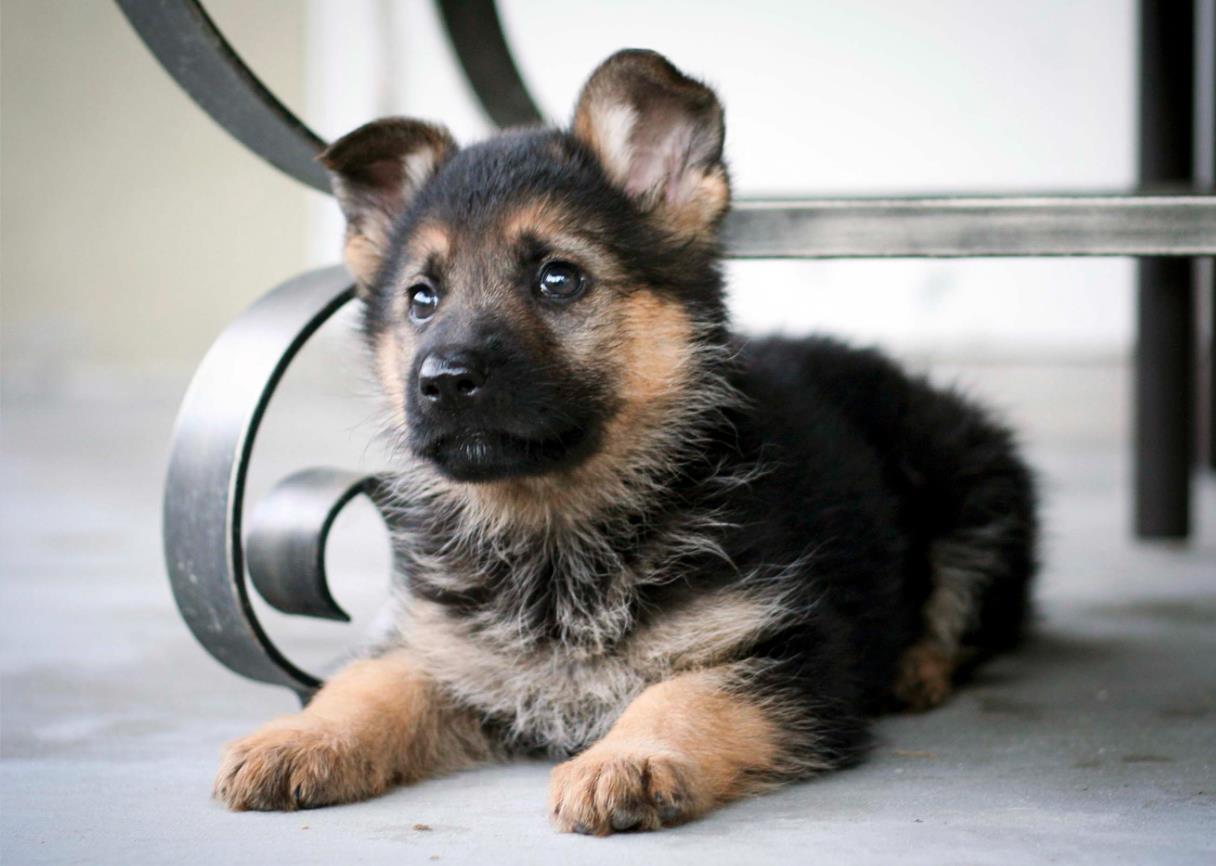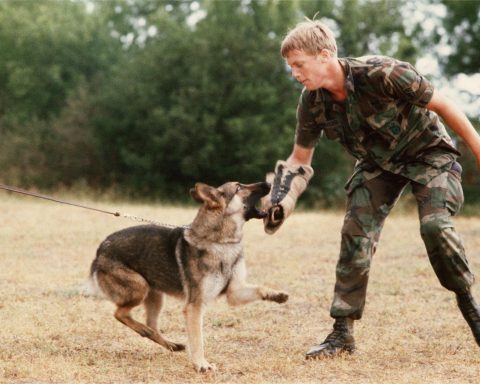The German Shepherd’s expressiveness develops gradually through the learning process. Even older dogs still have the ability to learn.
Like humans, dogs behave differently in different situations and at different stages of learning. The learning process is what allows the dog to master specific behaviors under specific environmental conditions. Behavioral patterns may also be interrupted through biochemical processes, i.e., neurological actions and normal movements.
Also other changing motivations can cause behavioral patterns to change. For example, a bitch in heat will chase her puppies while running and is very difficult to control.
As a puppy, a dog can take in a lot of information from the outside world and self-analyze it. Different periods in a dog’s life require attention. This developmental process is also known as individual development.
The first to second week of a German Shepherd’s life is the “vegetative growth period”. Puppies have no sense of smell and no vision. Therefore, they will only crawl in a fixed circle and will not stray far from the litter.
At the end of the second week, the puppy opens its eyes and enters the third week, the “transition period”. Although the eyes are open, the puppy cannot see. It is not until the 17th to 18th day that the puppy has vision. During this transition period, puppies begin to socialize and lick each other. On day 21, the puppies leave the kennel. In a German Shepherd kennel one can see that all the members of the pack take care of the puppies. When the puppies leave the kennel, the adult male dog will charge the puppies very roughly. In this way the puppies realize that the world outside the den is cold and even dangerous. As soon as the pups return to the den, this rough play stops. This is an important educational method for young children in dog pack life.
During weeks 4 through 7 the puppy enters the “influence period”. This period is critical to the dog’s subsequent behavior. All of the dog’s senses are fully developed during this period and the dog can differentiate between its own kind and humans (outside situations). Contact with people of its own kind and with humans (especially children) is very important at this stage so that it can influence the dog’s future social behavior. Otherwise it will become fearful of humans or engage in aggressive behavior.
Between weeks 8 and 12 is the “socialization” stage, where the puppy is taught to become a socialized member of the human-dog relationship. This requires constant training, and the puppy should not be allowed to act out just because it is cute, but should be treated like an adult dog. If the puppy is disobedient, it can be punished by, for example, discontinuing play and isolating the puppy.
It is certainly not possible for a 12-week-old puppy to complete any training program, and the puppy should not be overly demanding. Play is the best way for a puppy to learn. In the case of wild dogs and wolves, for example, a clear hierarchy is established during play at a young age to avoid injuries later in a fight. Our domestic dogs similarly test their owner’s authority during the “Hierarchy Determination Period” (weeks 13 through 16). During this period, the puppy will establish a fixed position in the family (pack).
The German Shepherd enters the “pack order period” at the 5th and 6th months of age, when education and simple training can begin. During this period, more time must be spent playing and traveling with the dog. In this way, the puppy’s ability to learn can be positively influenced by the rapid development of brain structures and the corresponding increase in the cerebral cortex, which promotes the puppy’s motivation to learn.
At 7 months, the dog enters the “sexual maturity stage”. The male dog raises his hind legs for the first time while urinating, and the female dog suddenly begins to attack the puppies and enters the first estrus period. At this stage, the dog may become very disobedient and even try to break the hierarchical order. The owner must maintain authority over the dog and not take it lightly at any time or it will be seen as a weakness by the dog and cause problems in the future.
As you can see, there are many things that can motivate a dog to learn and if these attractions are missing, the dog will be reluctant to be trained and follow commands.



